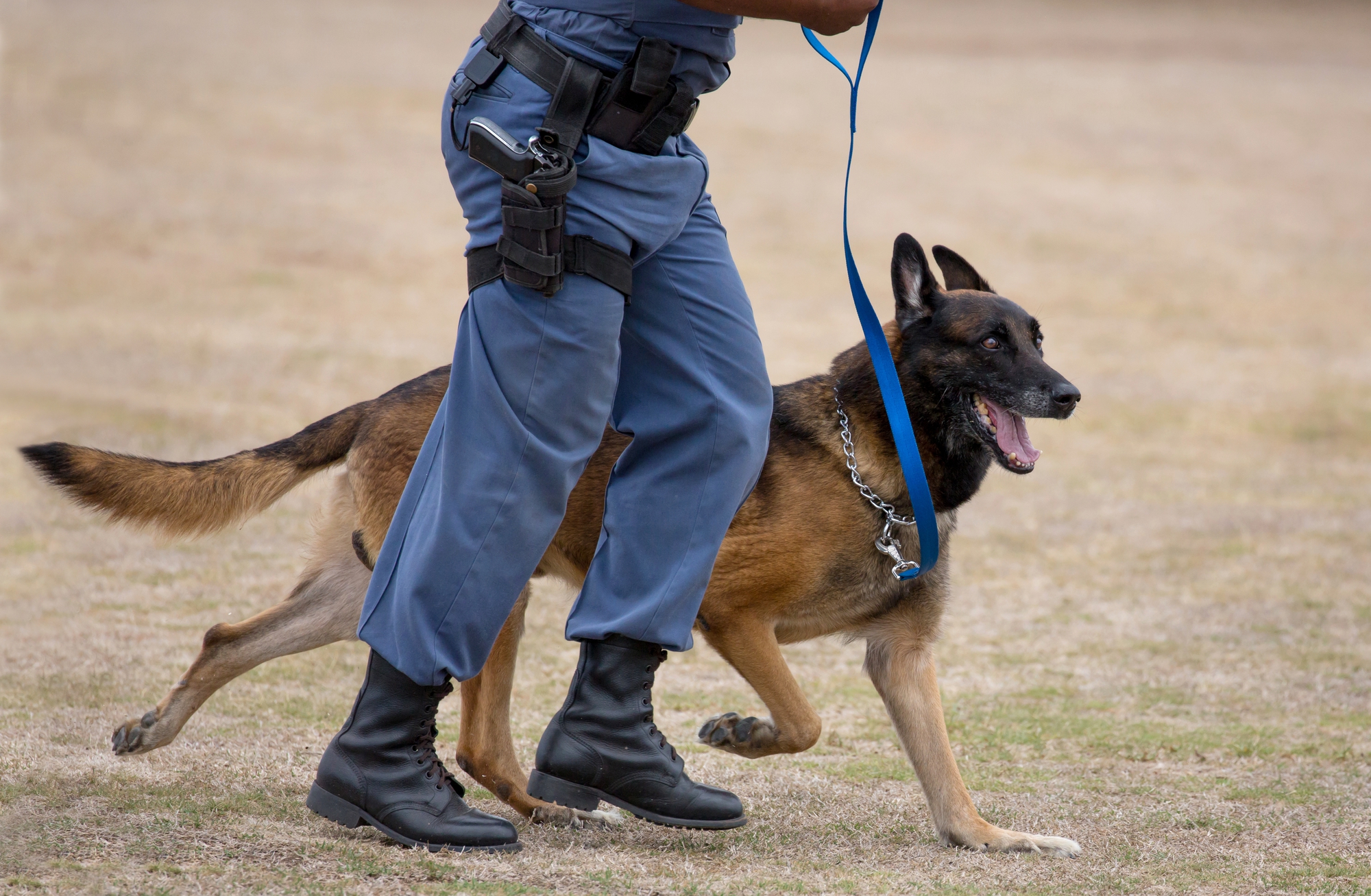Cross-training these protection dogs in multiple disciplines expands their capabilities and makes them a highly valuable asset for a variety of situations and environments. Protection dog services like Scott’s K9 utilize cross-training techniques to maximize the abilities of their working dogs. This versatility provides substantial benefits for both the dogs and their handlers.
For those seeking the best in family or executive protection, a Scott’s K9 protection dog offers a combination of elite training, personalized service, and proven effectiveness. Contact us to learn more about exceptional protection dogs.
What is Cross-Training for Protection Dogs?
Cross-training refers to teaching a protection dog skills in more than one specific role. While some dogs may specialize in a single function, such as property protection or apprehension work, cross-training introduces them to additional jobs so they can serve in a wider range of capacities. Common areas that protection dogs are cross-trained in include, but are not limited to:
- Property/Perimeter Protection
- Tactical Apprehension
- Tracking/Trailing
- Narcotics or Explosives Detection
- Disaster Response
Dogs that undergo cross-training gain exposure to new situations, environments, commands, scents, equipment, and operating procedures. The more roles the dog is proficient in, the more multi-purpose applications it can fulfill for its handler or organization.
Benefits of a Cross-Trained Protection Dog
There are many tangible and intangible advantages to developing a well-rounded protection dog through deliberate cross-training methods.
Increased Confidence
Mastering various disciplines boosts the dog’s self-assurance in responding to unfamiliar settings or requirements. The dog gains confidence through succeeding in the learned skills.
Heightened Mental Stimulation
Varying the training regimen exercises the dog’s mind. Combining tracking exercises with explosive detection training, for example, provides greater cognitive challenges compared to repetitive single-task drills. Ongoing mental stimulation helps prevent boredom or skill erosion.
Improved Socialization
Training among new groups of people, in unfamiliar venues, and alongside different canine partners expands the dog’s capacity to operate in diverse social scenarios. This allows the dog to work effectively regardless of the environment or individuals involved in the situation.
Enhanced Adaptability
A cross-trained protection dog is primed to adjust its responses readily based on situational demands. The flexibility developed through multi-disciplinary preparation enables fast reaction times for dynamic, rapidly evolving scenarios.
Wider Range of Services
A protection dog with cross-training has more marketable skill sets. The scope of services it can provide makes it useful for individual clients and organizations with specialized needs, from families wanting an estate guardian to law enforcement teams seeking scent-detection.
Stronger Relationship with Handler
The intensive training process required for mastering multiple practices deepens the connection and trust between handler and dog through significant time, communication and teamwork development.
Enhanced Skills and Abilities
By exposing the dog to different types of training, such as obedience, agility, tracking, and scent work, their overall skill set is broadened. This makes them more capable in various aspects of protection and assistance.
Increased Physical Fitness
Different types of training exercises contribute to the dog’s overall physical fitness and health. This is important for a protection dog, as they need to be in top physical condition to perform their duties effectively.
Enhanced Problem-Solving Skills
Exposure to different training challenges enhances a dog’s problem-solving abilities. This is particularly useful in protection work where dogs may encounter unpredictable situations.
Longevity in Service
Dogs that are cross-trained may enjoy a longer service life as they are continuously engaged and maintained in peak condition, both mentally and physically.
Why Choose a Scott’s K9 Protection Dog?
Scott’s K9 is a top choice for elite protection dogs, offering:
- Expert Training: Over 20 years of experience in training Belgian Malinois and German Shepherds to police standards.
- Personalized Delivery and Support: Each dog is hand-delivered with ongoing support to ensure perfect integration into your family or business.
- Proven Effectiveness: A track record of providing dogs for military, police, and executive protection, skilled in detection and tactical operations.
- Quality Assurance: All dogs come with a performance and health guarantee.
- Global Recognition: Trusted by clients worldwide, including government agencies and private individuals.
Related Article: 9 BEST DOG BREEDS FOR WOMEN LIVING ALONE
Experience the Ultimate Security with Scott’s K9 Elite Protection Dogs
Discover the unparalleled safety and peace of mind that comes with owning a Scott’s K9 Elite Protection Dog. Our expertly trained dogs are more than just pets; they are loyal guardians, ready to protect you and your family. With Scott’s K9, you’re not just buying a dog; you’re investing in your safety.
Each of our dogs is meticulously trained in advanced protection skills, ensuring they are prepared for any situation. Don’t wait for security, take control with a Scott’s K9 Protection Dog. Contact us at (919) 939-6003 to find the perfect guardian for your home and lifestyle, and experience the difference that true security brings.
